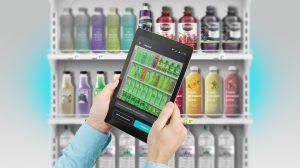Europe switches to automatic analysis of price tags in retail outlets
Experts in retail automation from IBA Group IT Company told how to prevent it and streamline the audit of price tags.
Consumers today are very critical of product prices. According to a PwC survey (February 2023), 56% of respondents indicated that price increases remain the most common problem when shopping in-store. Therefore, a nasty surprise in the form of a higher price for goods at the checkout will significantly affect customer loyalty to the store.
In addition to avoiding conflicts with buyers, FMCG producers and distributors conduct price tag audits for another critical purpose – obtain insights into competitor practices. Knowing your agreements with the retailer and seeing the price movements of competitors, you can understand the business conditions of competitors with the outlet, and then offer more favorable conditions for yourself.
Merchandisers most often check price tags manually by entering the value into the app or by checking against their records. However, this approach may be inaccurate, as the merchandiser may make a mistake, and prices may change throughout the day. Then the records in the hands of the employee are no longer relevant. As a result, the company's marketers or buyers see non-current prices.
In the European market, one of the solutions for automating the audit of price tags is Goods Checker. This is an application for automating all merchandising stage: from comparing the layout with a planogram and auditing price tags, to obtaining detailed analytics.
The process of automatic price tag audit is as follows: a merchandiser takes a photo of a shelf with goods in a store, Goods Checker identifies the goods and price tags in the photo. The application then compares the values on the tags with its database and determines if the tags are correct.
Automation of price tag audit helps to reduce the time for checking price tags, reduce errors and the number of conflict situations with buyers. In addition, Goods Checker generates detailed reports where FMCG companies can see price analytics for both their own products and competitors. Reports help, for example, develop marketing strategies or track how buyers respond to price changes.
“Industry-specific solutions help to monitor these aspects and accumulate data for analytics. Due to automation, analytics will have up-to-date, accurate and comprehensive data that will not mislead marketers and managers,” concluded retail automation experts from IBA Group.
Dzmitry
IBA
+1 246-262-5232
email us here
Visit us on social media:
Facebook
LinkedIn
Legal Disclaimer:
EIN Presswire provides this news content "as is" without warranty of any kind. We do not accept any responsibility or liability for the accuracy, content, images, videos, licenses, completeness, legality, or reliability of the information contained in this article. If you have any complaints or copyright issues related to this article, kindly contact the author above.



